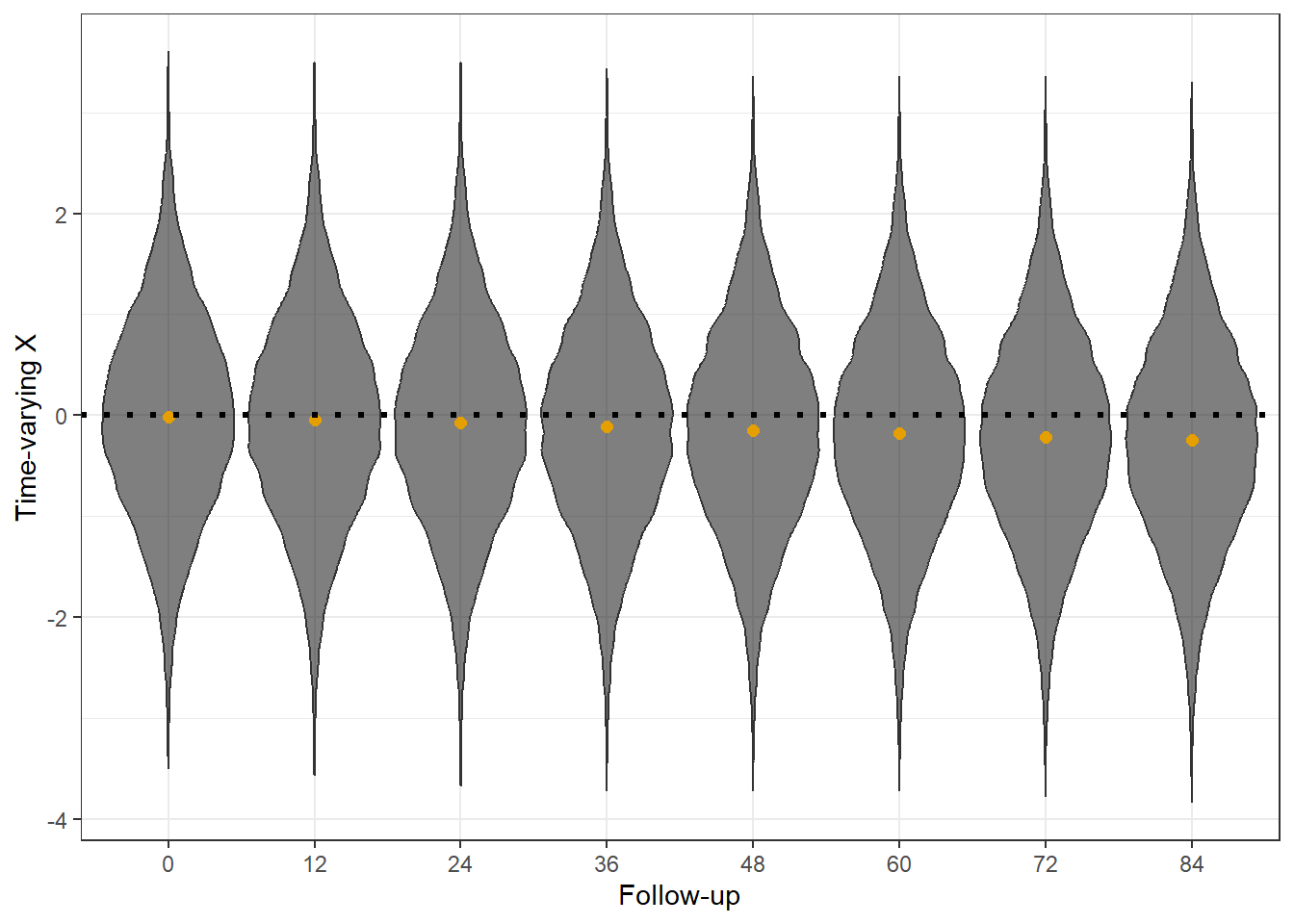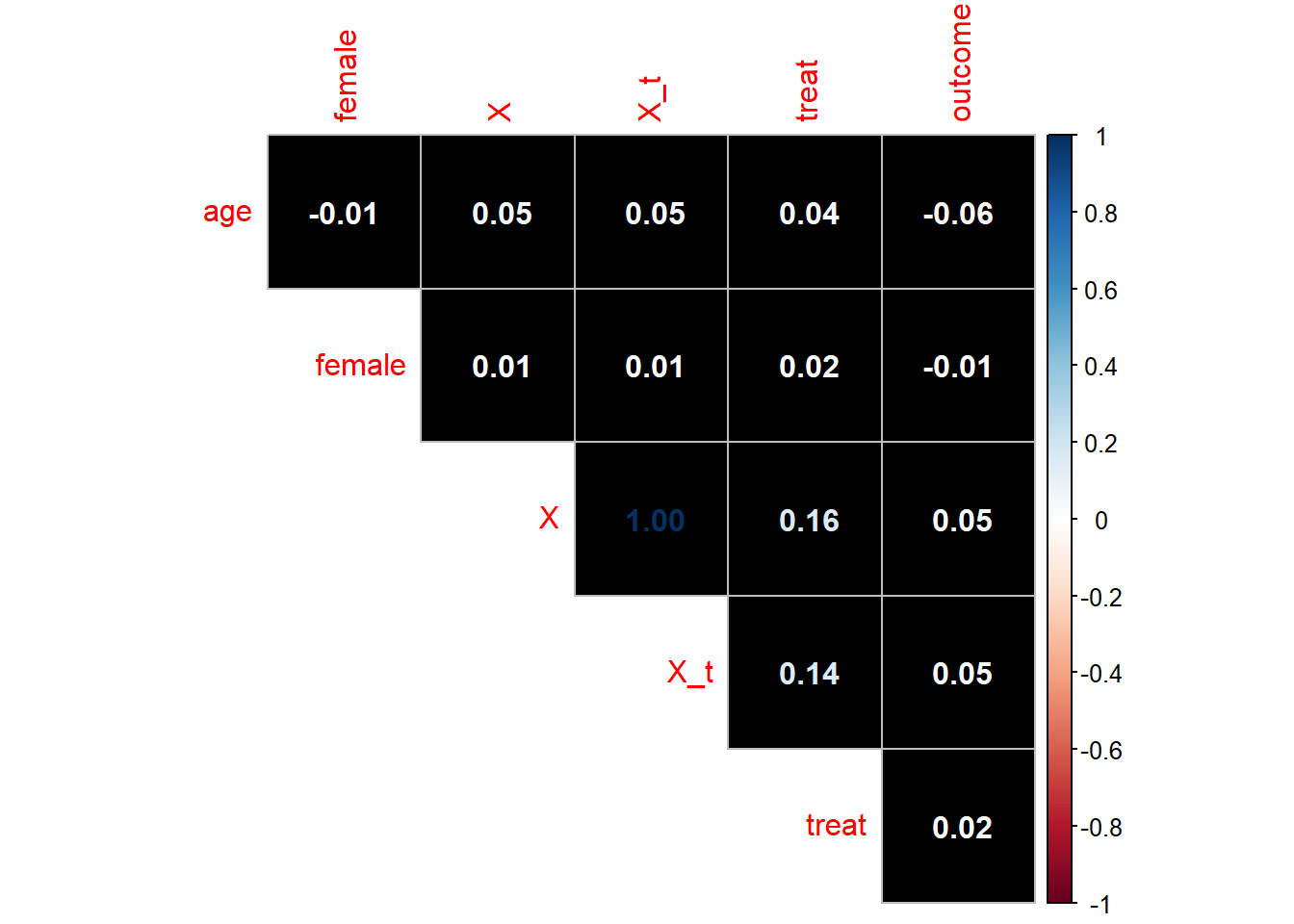Rows: 486,944
Columns: 16
$ id <int> 1, 1, 1, 1, 1, 1, 1, 1, 1, 1, 1, 1, 1, 1, 1, 1, 1, 1, 1, 1, …
$ age <dbl> 70, 70, 70, 70, 70, 70, 70, 70, 70, 70, 70, 70, 70, 70, 70, …
$ female <dbl> 0, 0, 0, 0, 0, 0, 0, 0, 0, 0, 0, 0, 0, 0, 0, 0, 0, 0, 0, 0, …
$ fup <dbl> 90, 90, 90, 90, 90, 90, 90, 90, 90, 90, 90, 90, 90, 90, 90, …
$ X <dbl> -0.7311102, -0.7311102, -0.7311102, -0.7311102, -0.7311102, …
$ exit <int> 1, 2, 3, 4, 5, 6, 7, 8, 9, 10, 11, 12, 13, 14, 15, 16, 17, 1…
$ enter <dbl> 0, 1, 2, 3, 4, 5, 6, 7, 8, 9, 10, 11, 12, 13, 14, 15, 16, 17…
$ time <int> 1, 2, 3, 4, 5, 6, 7, 8, 9, 10, 11, 12, 13, 14, 15, 16, 17, 1…
$ X_shift <int> 0, 0, 0, 0, 0, 0, 0, 0, 0, 0, 0, 0, 0, 0, 0, 0, 1, 1, 1, 1, …
$ X_t <dbl> -0.7311102, -0.7311102, -0.7311102, -0.7311102, -0.7311102, …
$ log_odds <dbl> -5.502477, -5.492577, -5.482077, -5.470977, -5.459277, -5.44…
$ p <dbl> 0.004060109, 0.004100338, 0.004143439, 0.004189494, 0.004238…
$ treat <dbl> 0, 0, 0, 0, 0, 0, 0, 0, 0, 0, 0, 0, 0, 0, 0, 0, 0, 0, 0, 0, …
$ outcome <dbl> 0, 0, 0, 0, 0, 0, 0, 0, 0, 0, 0, 0, 0, 0, 0, 0, 0, 0, 0, 0, …
$ t_outcome <dbl> 46, 46, 46, 46, 46, 46, 46, 46, 46, 46, 46, 46, 46, 46, 46, …
$ t_treat <dbl> Inf, Inf, Inf, Inf, Inf, Inf, Inf, Inf, Inf, Inf, Inf, Inf, …





